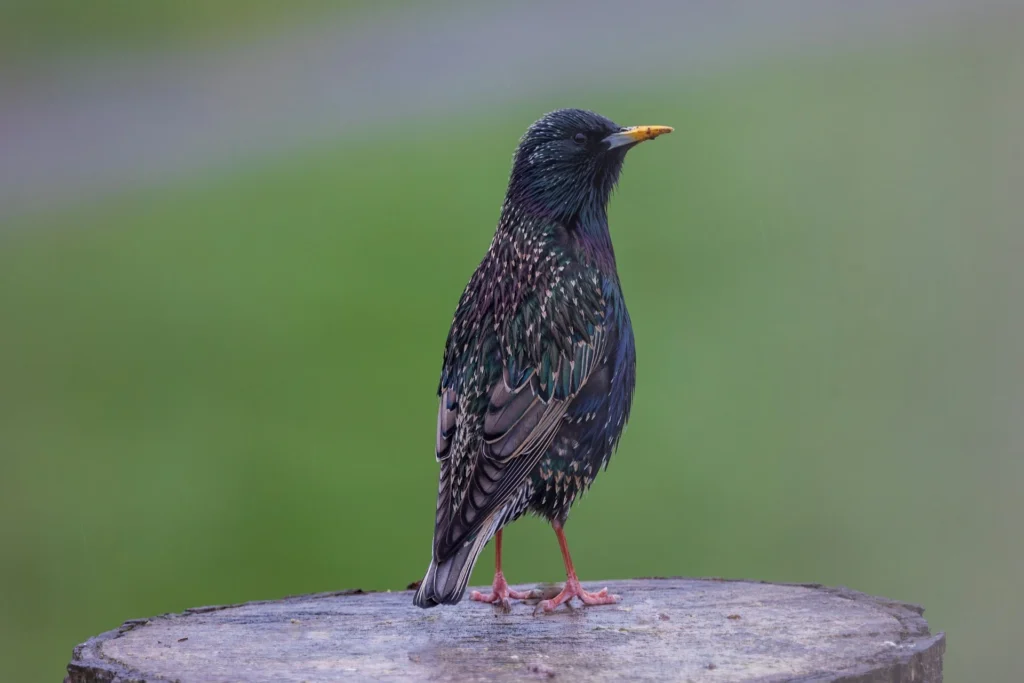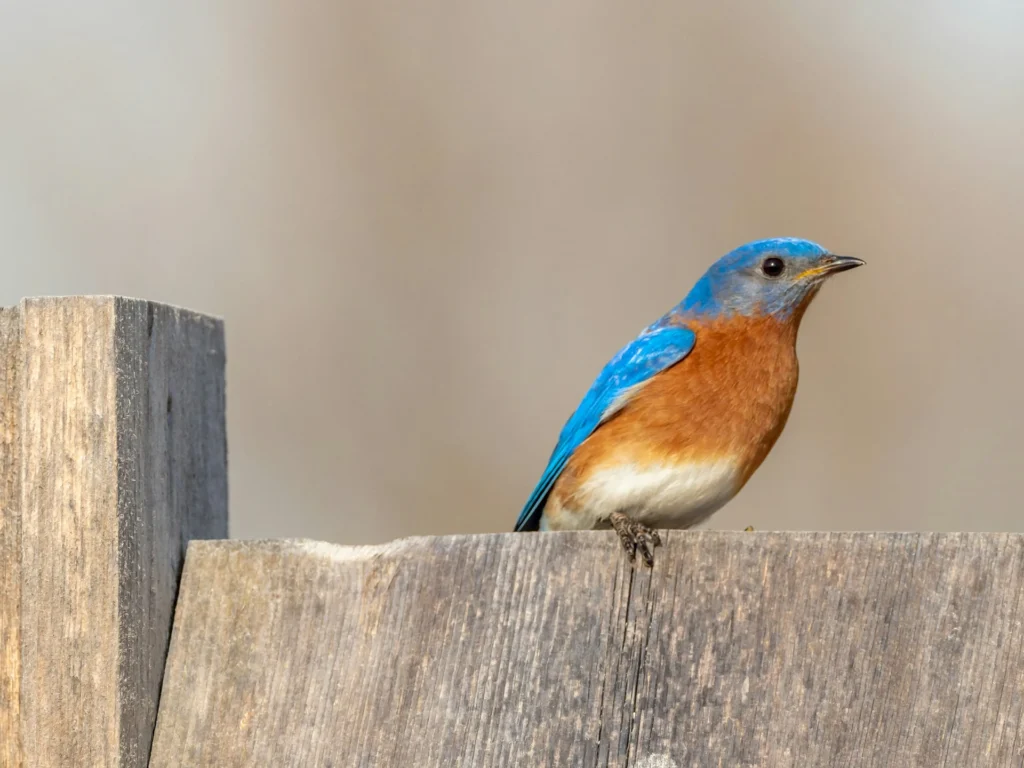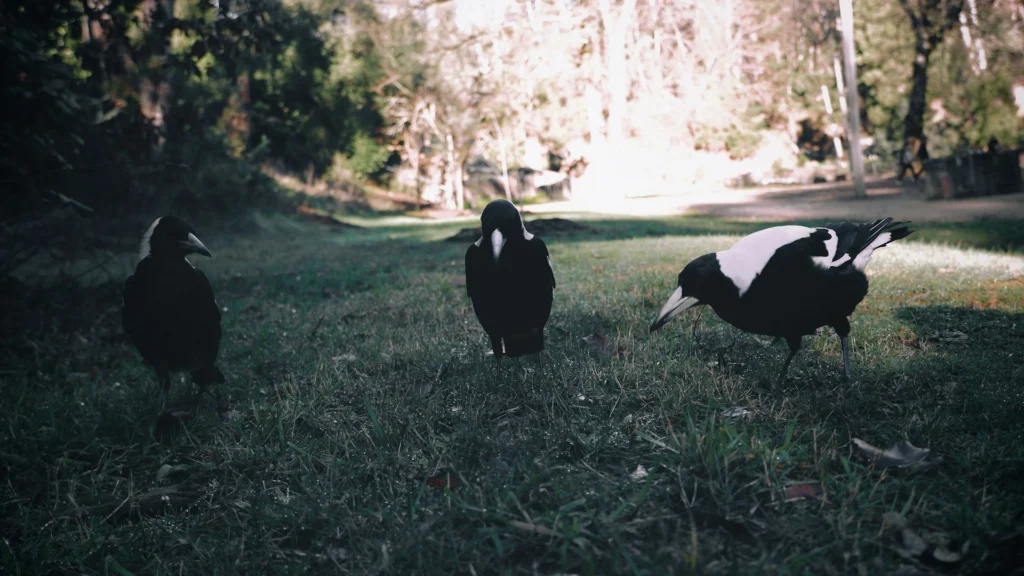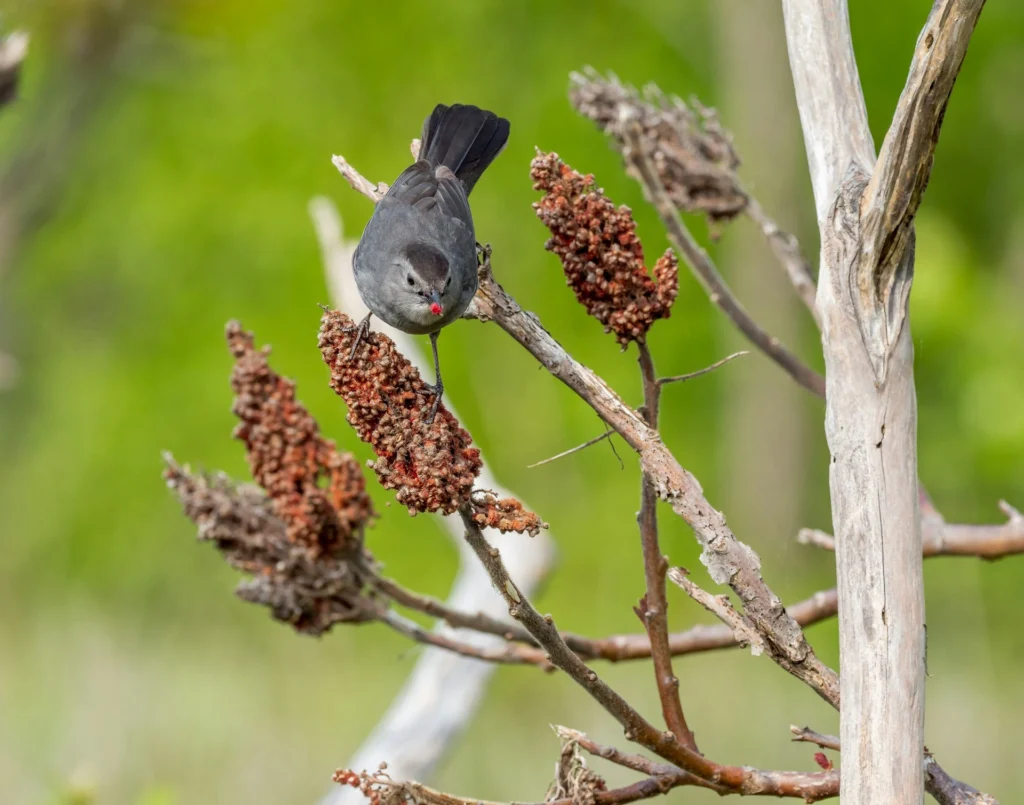Birds are incredibly diverse and fascinating creatures, boasting vibrant plumage, melodic songs, and intricate behaviors. Among their many wonders, one particularly enchanting feature is the existence of birds that lay blue eggs. These eggs, with hues ranging from pale sky blue to deep turquoise, capture the imagination of both bird enthusiasts and casual observers.
The beauty of blue eggs goes beyond their visual appeal, representing remarkable evolutionary adaptations. Their rarity adds to their allure, as only a select group of bird species, from the familiar American Robin to the exotic Emu, possess this unique trait.
In this article, we’ll delve into the science behind blue egg coloration, explore the lives of common and exotic birds producing these beautiful eggs, and emphasize the importance of conserving their habitats.
Table of Contents
What is The Science Behind Blue Eggs?
Have you ever wondered why some bird eggs are blue? It’s pretty cool! The blue color comes from a special pigment called biliverdin. Think of it like the natural paint that birds use to make their eggs. When a mama bird is forming an egg, biliverdin mixes with the shell to give it that beautiful blue color.
But why would a bird want blue eggs? There are a couple of neat reasons. First, camouflage! In nature, it’s all about hiding from predators. Blue eggs can blend in with their surroundings, like the sky or the leaves, making it harder for predators to spot them.
Another reason is temperature control. The blue pigment can help regulate the temperature inside the egg. This means the baby bird inside can stay at the right temperature, which is super important for its development.
So, blue eggs aren’t just pretty; they’re a clever way for birds to keep their babies safe and comfy!

Birds That Lay Blue Eggs
Here’s a look at some amazing bird species that lay blue eggs, along with detailed descriptions and their habitats.
1. American Robin

- Habitat: They prefer open areas, such as lawns, fields, and forests.
The American Robin is a well-known and beloved bird in North America, easily recognizable by its bright red chest and cheerful song. These birds are often seen hopping around lawns and gardens, searching for earthworms and insects.
They build their nests in trees and shrubs, using mud to reinforce the structure. Robins are adaptable and thrive in a variety of habitats, including forests, parks, and suburban areas. Their striking blue eggs are a common sign of spring, signaling new life and warmer days ahead.
2. Starlings

- Habitat: They thrive in urban areas, farmlands, and open woodlands.
Starlings are small to medium-sized birds with dark, glossy feathers that shimmer with iridescent colors in the sunlight. Known for their incredible mimicking abilities, they can imitate the sounds of other birds and
human noises.
These social birds are often seen in large flocks, performing mesmerizing aerial displays called murmurations. Starlings thrive in a variety of habitats, including urban areas, farmlands, and open woodlands. Their adaptability and intelligence make them a fascinating species to observe.
3. Blue-footed Booby

- Habitat: They are found along the coasts of the eastern Pacific Ocean, especially around the Galápagos Islands.
The Blue-footed Booby is a unique seabird, famous for its bright blue feet, which it uses in elaborate mating dances. These birds are excellent divers, plunging into the ocean to catch fish with remarkable precision.
Found along the coasts of the eastern Pacific Ocean, particularly around the Galápagos Islands, they prefer rocky shores and islands for nesting. Their blue eggs are laid in simple ground nests.
The Blue-footed Booby’s distinctive appearance and fascinating behaviors make it a standout species among seabirds.
4. Common Myna

- Habitat: They are native to Asia but have spread to many urban areas worldwide.
The Common Myna is a bold and adaptable bird, easily recognized by its brown body, black head, and bright yellow eye patches. Known for its loud and varied calls, the Myna is a highly social bird that often forms large, noisy flocks.
Originally from Asia, it has spread to many parts of the world, thriving in urban environments. Mynas are opportunistic feeders, consuming a wide range of food from insects to scraps in city streets. Their adaptability and resilience have made them successful in diverse habitats.
5. Blackbird

- Habitat: They are commonly found in forests, gardens, and parks across Europe and Asia.
Blackbirds are medium-sized birds with glossy black feathers and a melodious song that is a common sound in European gardens and woodlands. Male Blackbirds have striking yellow beaks and eye-rings, while females are generally brown with speckled breasts.
These birds are often seen foraging on the ground for insects and worms. They build their nests in dense shrubs and trees, laying beautiful blue-green eggs. Blackbirds are a familiar and beloved sight in many parts of Europe and Asia, symbolizing the charm of the countryside.
6. Snowy Egret

- Habitat: They inhabit wetlands, marshes, and shorelines across the Americas.
The Snowy Egret is an elegant white bird, distinguished by its slender black legs and bright yellow feet, which it uses to stir up prey in shallow waters. Found in wetlands, marshes, and coastal areas across the Americas, these birds are expert fishers, often seen gracefully wading through the water.
During the breeding season, Snowy Egrets display beautiful plumes that were once highly sought after for fashion, leading to their near extinction. Conservation efforts have helped their populations recover, and they now thrive in protected wetland habitats.
7. Eastern Bluebird

- Habitat: They prefer open fields and meadows with scattered trees and nest boxes.
The Eastern Bluebird is a small, vibrant bird with bright blue plumage and a rusty-red chest, known for its gentle demeanor and sweet, warbling song. These birds prefer open fields and meadows with scattered trees, often using nest boxes provided by humans.
They primarily feed on insects and berries, making them beneficial for pest control in gardens and orchards. Eastern Bluebirds are a symbol of happiness and hope, their presence often heralding the arrival of spring. Their blue eggs add to their charm and appeal.
8. Red-winged Blackbird

- Habitat: They are found in wetlands and marshes across North America.
The Red-winged Blackbird is easily identifiable by the male’s glossy black feathers and distinctive red and yellow shoulder patches. These birds are commonly found in wetlands and marshes across North America, where they build their nests among cattails and reeds. They are known for their aggressive territorial behavior, often seen chasing away intruders.
Red-winged Blackbirds have a varied diet, including insects, seeds, and grains. Their loud, conk-la-ree calls are a characteristic sound of their wetland habitats, adding to the vibrant ecosystem.
9. Dunnock

- Habitat: They live in hedgerows, gardens, and woodlands in Europe.
The Dunnock, also known as the Hedge Sparrow, is a small, brownish bird with a discreet appearance but fascinating behaviors. They are often seen skulking in hedgerows, gardens, and woodlands in Europe, searching for insects and seeds.
Dunnocks have complex mating systems, including polyandry and polygamy, which are rare among birds. Their nests, hidden in dense foliage, contain beautiful blue eggs. Despite their drab plumage, Dunnocks play a vital role in the ecosystem, controlling insect populations and dispersing seeds.
10. Blue-gray Gnatcatcher

- Habitat: They inhabit deciduous forests and woodland edges across North America.
The Blue-gray Gnatcatcher is a tiny, active bird with blue-gray feathers and a long, black-and-white tail. These birds are often seen flitting about in deciduous forests and woodland edges across North America, catching insects in mid-air.
Their high-pitched calls and energetic behavior make them a delight to observe. Blue-gray Gnatcatchers build intricate, cup-shaped nests in trees, using spider silk and lichens for construction. Their presence indicates healthy forest ecosystems, as they are sensitive to habitat changes.
11. Goldfinch

- Habitat: They are found in weedy fields, meadows, and gardens.
Goldfinches are small, brightly colored birds with vibrant yellow feathers and cheerful songs, making them a favorite among bird watchers. Found in weedy fields, meadows, and gardens, they feed primarily on seeds, especially from thistles and sunflowers. During the breeding season, Goldfinches build compact nests in shrubs and trees, laying pale blue eggs. Their social and acrobatic nature, along with their striking plumage, make them a delightful addition to any landscape. Goldfinches symbolize joy and positivity in many cultures.
12. Magpies

- Habitat: They are common in open countryside, farmlands, and urban areas.
Magpies are large, striking birds with black and white plumage and long tails, known for their intelligence and complex social structures. They are often seen in open countryside, farmlands, and urban areas, where they forage for a variety of foods, including insects, small animals, and seeds.
Magpies are also known for their ability to mimic sounds and their fascination with shiny objects. Their nests, built high in trees, are large and sturdy, containing blue-green eggs. Magpies are often associated with folklore and mythology due to their distinctive appearance and behaviors.13. Gray Catbird
13.Gray Catbird

- Habitat: They prefer dense shrubs and thickets in North America.
The Gray Catbird is a medium-sized bird with slate-gray feathers and a distinctive cat-like mewing call. They are found in dense shrubs and thickets across North America, often near water sources.
Catbirds are skilled mimics, incorporating the songs of other birds and environmental sounds into their melodies. Their nests are hidden in thick vegetation, and they lay beautiful blue-green eggs. Gray Catbirds play a crucial role in seed dispersal and insect control, contributing to the health of their habitats.
14. Great Tinamou

Patrick Coin (Patrick Coin), CC BY-SA 2.5, via Wikimedia Commons
The Great Tinamou is a ground-dwelling bird with a plump body and excellent camouflage, blending seamlessly into the tropical forests of Central and South America. They have a distinctive, haunting call that echoes through the forest. Tinamous are shy and elusive, making them difficult to spot in the wild. They forage on the forest floor for fruits, seeds, and small animals. Their nests are simple scrapes in the ground, where they lay large, shiny blue-green eggs. The Great Tinamou’s presence indicates a healthy and undisturbed forest ecosystem.
15. Blue Jay

- Habitat: They are found in forests, woodlands, and suburban areas across eastern and central North America.
Blue Jays are striking birds with vibrant blue and white plumage and a loud, jay-jay call. They are highly intelligent and known for their complex social behaviors and ability to mimic other birds and sounds.
Blue Jays are found in forests, woodlands, and suburban areas across eastern and central North America. They are omnivorous, eating a varied diet that includes insects, nuts, seeds, and small animals. Their nests, built high in trees, contain pale blue or greenish eggs. Blue Jays are essential to forest regeneration, as they help disperse seeds, particularly acorns.
Fun Facts About Birds That Lay Blue Eggs
- The blue color of bird eggs comes from a special color called biliverdin. It’s like the greenish color you see in bruises on your skin.
- American Robins are famous for their bright blue eggs. The color is so special that people use the name “Robin’s egg blue” as a color in art and fashion.
- Blue and green eggs can hide well in nature. They blend in with leaves and the sky, making it hard for predators to see them and keep the baby birds safe.
- The blue color might also help keep the eggs at the right temperature, making sure the baby birds inside grow strong and healthy.
- For birds like the Blue-footed Booby, the daddy bird’s bright blue feet are super important. The bluer the feet, the more the mommy bird likes him!
- A long time ago, the Snowy Egret was in trouble because people wanted their pretty feathers for hats. Luckily, people helped protect them, and now there are lots of Snowy Egrets again.
Wrap It Up: Each of these bird species not only adds to the diversity of the avian world but also contributes to the beauty and wonder of nature with their unique blue eggs.
What is a small greyish male bird with red breast?
Male American Robin

Welcome to World Birds Life, where the wonder of birds takes center stage. My name is Lexi, and I’m passionate about helping you discover the beauty and joy that birds bring into our lives.







